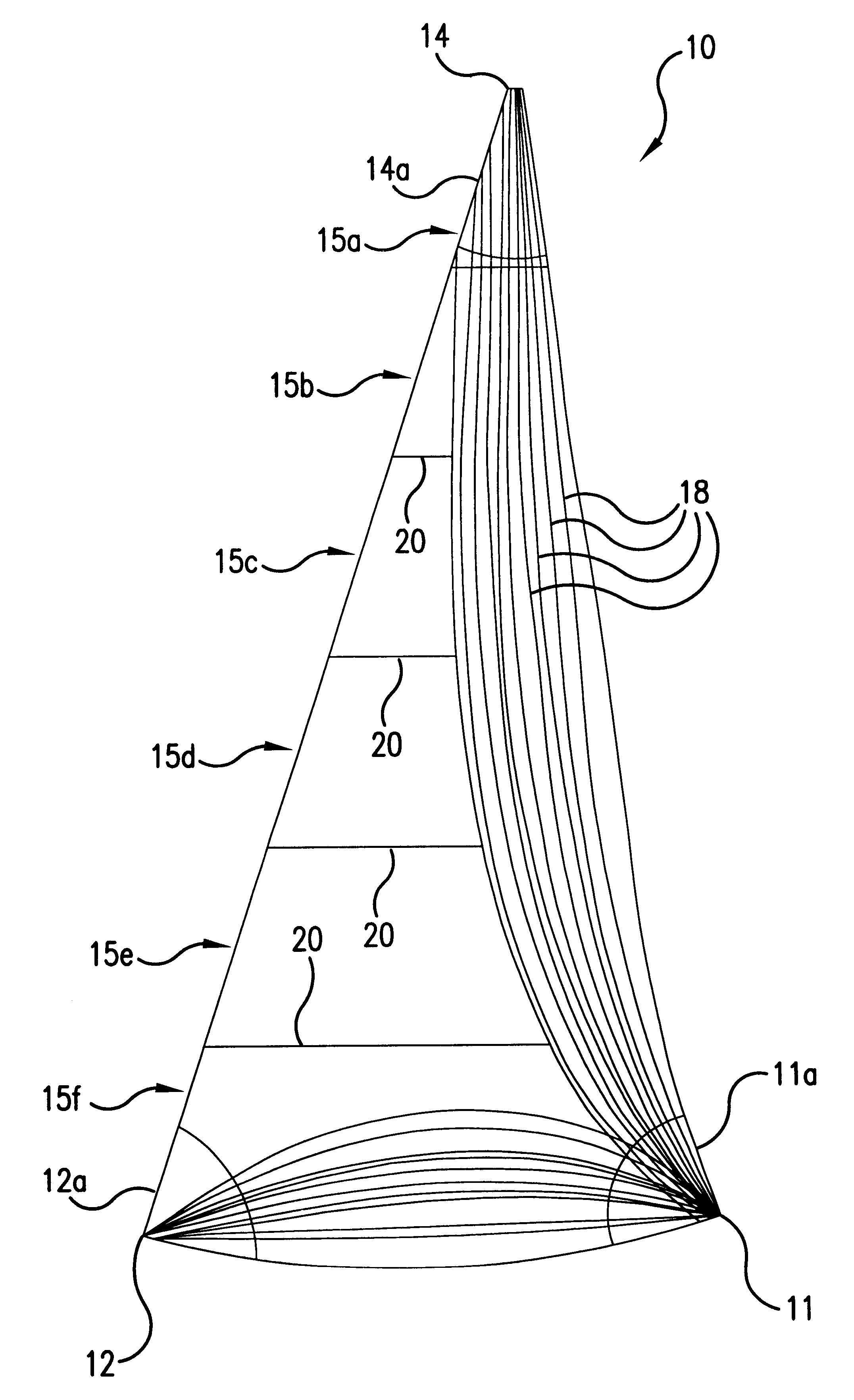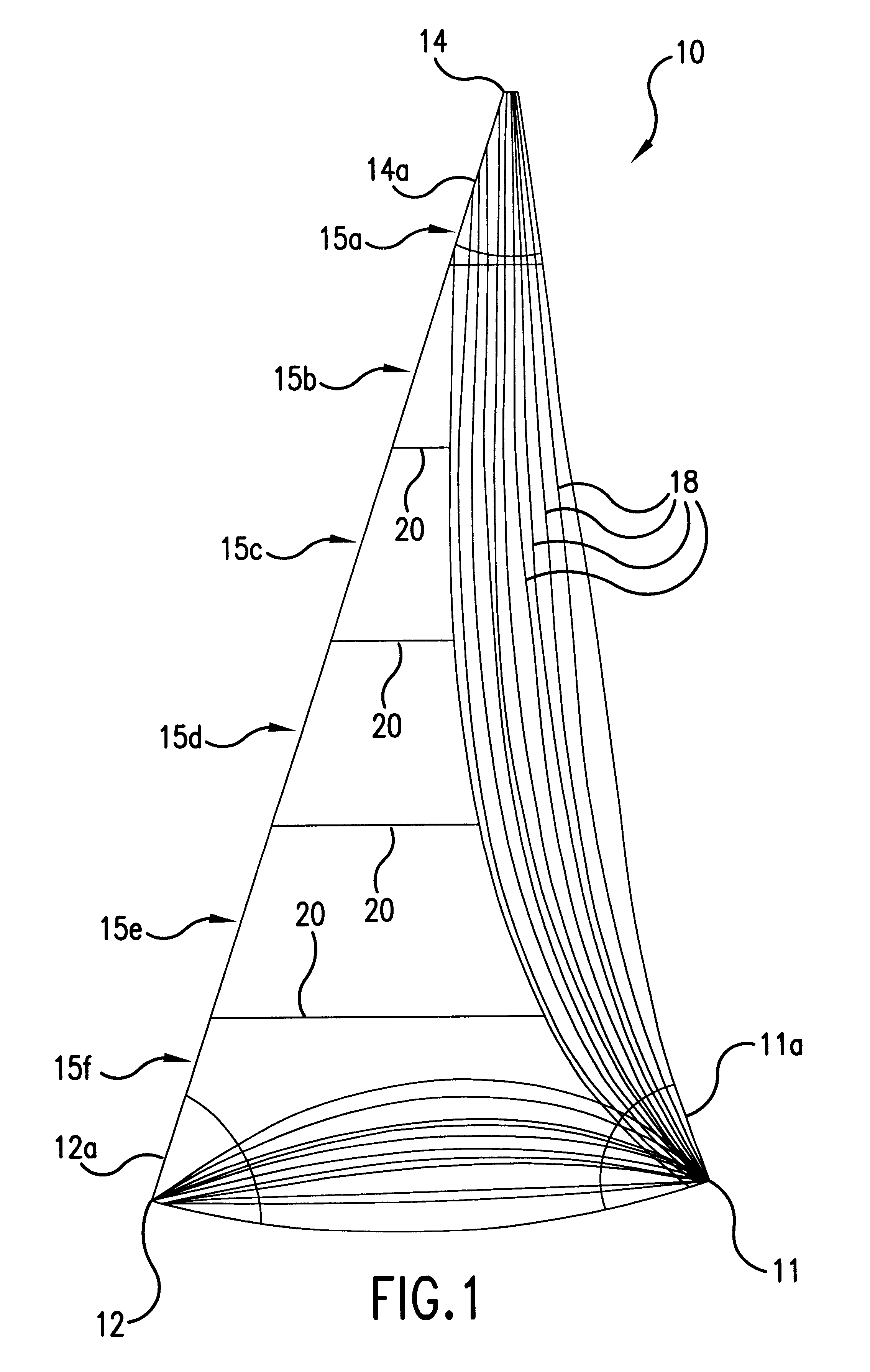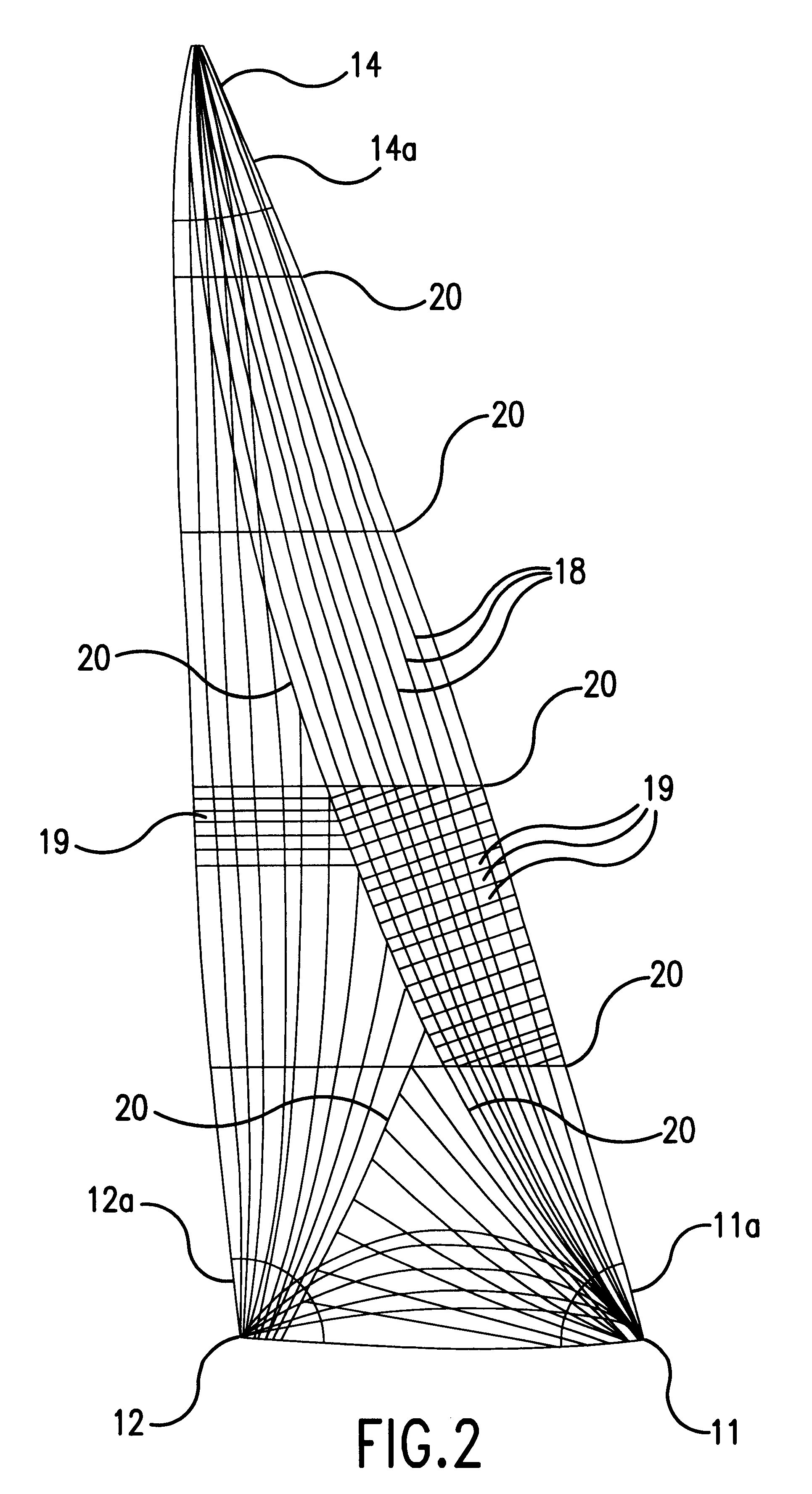Seamed sail and method of manufacture
a technology applied in the field of seams and sails, can solve the problems of difficult seams, complex shape design, and need to cut sails
- Summary
- Abstract
- Description
- Claims
- Application Information
AI Technical Summary
Benefits of technology
Problems solved by technology
Method used
Image
Examples
Embodiment Construction
With reference to the drawings schematically illustrating various embodiments of the invention and without limiting other aspects of the invention:
FIG. 1 illustrates in plan view a jib or genoa sail partially fabricated;
FIG. 2 illustrates in plan view a mainsail with various panel arrangements;
FIG. 3 illustrates in a plan view precursor panels and seams for a jib sail made on a flat table;
FIG. 3A illustrates in a plan view an embodiment for reversing directions at a corner of a sail;
FIG. 3B illustrates schematically in a cross-sectional view a seam before it is glued together;
FIG. 3C illustrates schematically in a cross-sectional view a finished, glued seam;
FIG. 4 illustrates schematically in a top plan view a table with associated gantry and turret devices for laying down continuous filament yarns on a sail precursor shape;
FIG. 5 illustrates schematically in a partial left-hand side view a gantry and a turret shown in FIG. 4 including a yarn dispensing device;
FIG. 6 illustrates in ...
PUM
| Property | Measurement | Unit |
|---|---|---|
| length | aaaaa | aaaaa |
| length | aaaaa | aaaaa |
| heat activatable | aaaaa | aaaaa |
Abstract
Description
Claims
Application Information
 Login to View More
Login to View More - R&D
- Intellectual Property
- Life Sciences
- Materials
- Tech Scout
- Unparalleled Data Quality
- Higher Quality Content
- 60% Fewer Hallucinations
Browse by: Latest US Patents, China's latest patents, Technical Efficacy Thesaurus, Application Domain, Technology Topic, Popular Technical Reports.
© 2025 PatSnap. All rights reserved.Legal|Privacy policy|Modern Slavery Act Transparency Statement|Sitemap|About US| Contact US: help@patsnap.com



